
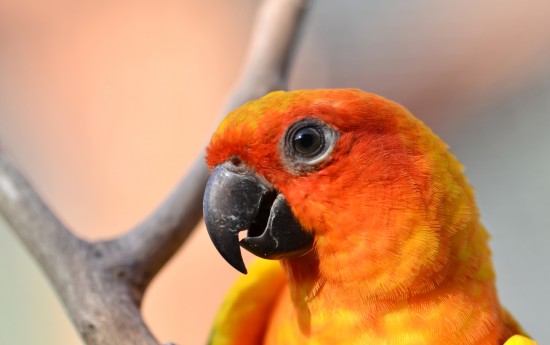
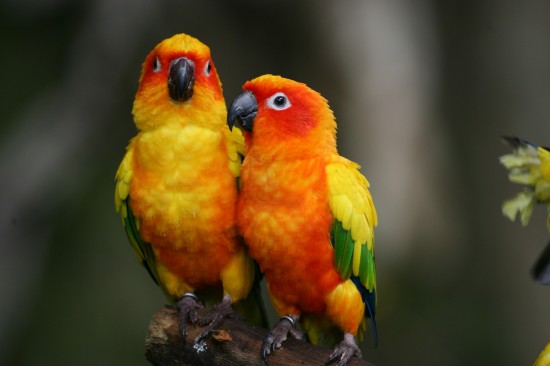
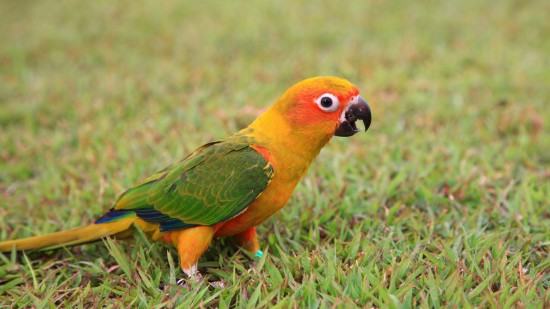
The Sun Conure (Aratinga solstitialis), also known as the Sun Parakeet, is a medium sized bird native to north-east South America. They are typically 30cm in length and cannot be visually sexed.
Both male and female birds are very brightly coloured with a rich yellow crown, nape and mantle as well as chest and some wing feathers. The face and belly are orange and there are red feathers around the ears while the rest of wing feathers are green and tips dark blue. The tail is olive green with blue at the tip and the beak is black. They have a bare eye ring of grey skin that is almost white on some birds.
In the wild, this is a bird that lives in the savannah ad coastal forests as well as humid forest growing in the foothills of the Guiana Shield and sometimes in more open habitats between forests. They are in danger in the wild due to habitat loss. They live in groups of around 30 birds.
In captivity, some sources have found Sun Conures to thrive best when kept in pairs and not with other birds, as they can be hostile, even to larger species. However others have found them to be sociable birds who enjoy other birds company. The best advice in this situation is to follow what they have been raised with – if they have been raised with other birds without issue then can live with similar sized or larger birds. But if they have been kept only with their own kind it may be worth keeping them that way or introducing them to others in a controlled and careful way
They are best kept in an outdoor aviary or an inside flight that has an insulated night house and is made from the sturdiest mesh as their capacity to bite through things is prodigious. Plants will be destroyed in no time so unless putting in their enclosure for this purpose, there isn’t much point and make sure they cannot access any wood construction to their home as they can also chew through this. They roost in a nest box overnight so even outside breeding season, a nest box will be needed in their home for them to sleep in.
These birds are very vocal and can be very loud meaning they may not be suitable for residential areas. They will call loudly if disturbed or unhappy about anything but their normal calls are also very loud. They can learn to talk to a limited degree and will also learn to mimic the sounds they hear around them, such as the microwaving beeping or a regular alarm clock. They are also said to be something of a watchdog bird as if something happens that it unfamiliar to them, they will screech loudly, so if someone enters the room they don’t know, you quickly will know about it!
As a pet bird, Sun Conures are very intelligent and bond with humans well if raised by them. They are affectionate but need plenty of attention and time out of their cage to avoid behavioural problems and boredom.
A minimum recommended size for a conure cage is 20 x 20 x 36inches but the bigger the better. The birds needs to be able to open their wings and for their tail feathers not to scrape on the floor to be happy and hygienic. They enjoy playing with toys and need plenty of stimulation when in the cage but there will be chewing involved so don’t be surprised if toys are destroyed – it means they have been good fun and served their purpose. They also enjoy swings and fresh twigs to chew while untreated leather toys are also available.
Often Happy Huts or similar fur covered cosy tents are given to a cage bird in place of a nesting box for night-time roosting. It is worth noting that these should be checked daily for any signs of damage as with the conure’s natural tendency to chew things, they could become a hazard due to strangling from loose threads or cutting off legs or toes if it becomes wrapped around.
These birds will happily eat a large parakeet seed mix and will need a large amount of egg food during the breeding season. They show a preference for green and yellow vegetables but should not be given avocado, as it is poisonous. Some sources also state not to give them cabbage, iceberg lettuce and parsley.
One source gave a ratio for a Sun Conure’s diet to be 50% grains, breads and cereals (seeds), 45% fresh vegetables and 5% fresh fruit. If protein is needed to supplement this, nuts or legumes such as navy beans, kidney beans or lentils can be cooked and given to them.
They need clean water each day and as well as drinking, they do enjoy a bath as well, so a separate bowl large enough for them to do this in is essential.
For breeding, they prefer a nest box around 25cm x 25cm with a height of 50-60cm. The base should be reinforced otherwise the birds may well gnaw a hole through it. A sign they are ready to breed will be them altering their nest box by adding material into it. Usually this will be branches that they gnaw up and add to the box or other loose material.
Up to four eggs are laid and incubated mainly by the female bird. The young hatch at 25-29 days and fledge around 45-60 days of age when they are fed by both parents until weaned.
These beautiful birds are easy to learn to live with and bond well with humans, their only real downside can be the loudness of their calls that may make them unsuitable for some homes. But otherwise they are affectionate, intelligent and even help protect your home from anything unusual with their habit of calling out when something unexpected happens. They are easy to feed and can breed with the right amount of space so will be a great addition to the family.
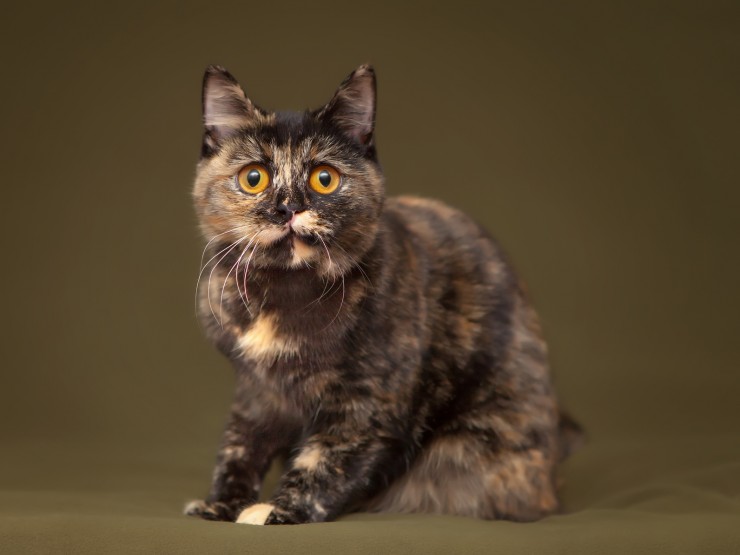 Seven Interesting Facts About Tortoiseshell And Calico Cats
Seven Interesting
Seven Interesting Facts About Tortoiseshell And Calico Cats
Seven Interesting
 Where Is The Best Place To Put Your Dog’s Bed?
Where Is The Best
Where Is The Best Place To Put Your Dog’s Bed?
Where Is The Best
 Top 3 tips for Beginner Feral Pig Hunters
Top 3 tips for Beginner Feral Pig Hunters
Fera
Top 3 tips for Beginner Feral Pig Hunters
Top 3 tips for Beginner Feral Pig Hunters
Fera
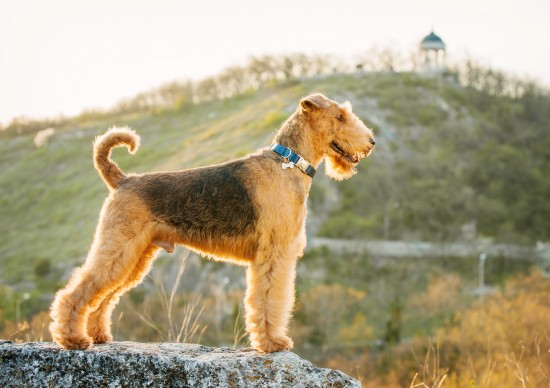 4 Gorgeous Breeds Of Curly Coated Dogs
4 Gorgeous Breeds
4 Gorgeous Breeds Of Curly Coated Dogs
4 Gorgeous Breeds
 The best and unique dog care services available online
The best and unique dog care services available online
The best and unique dog care services available online
The best and unique dog care services available online
Copyright © 2005-2016 Pet Information All Rights Reserved
Contact us: www162date@outlook.com